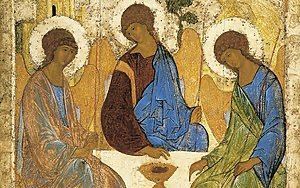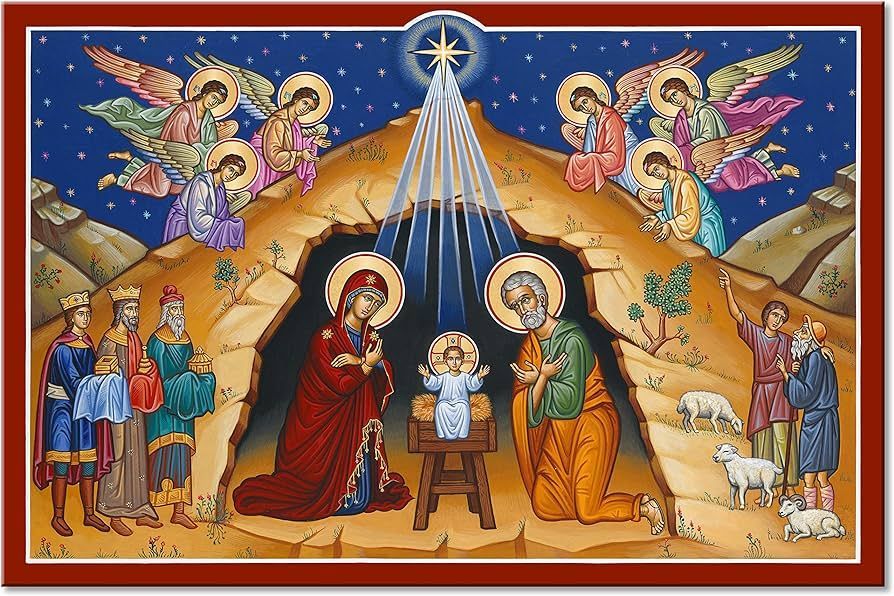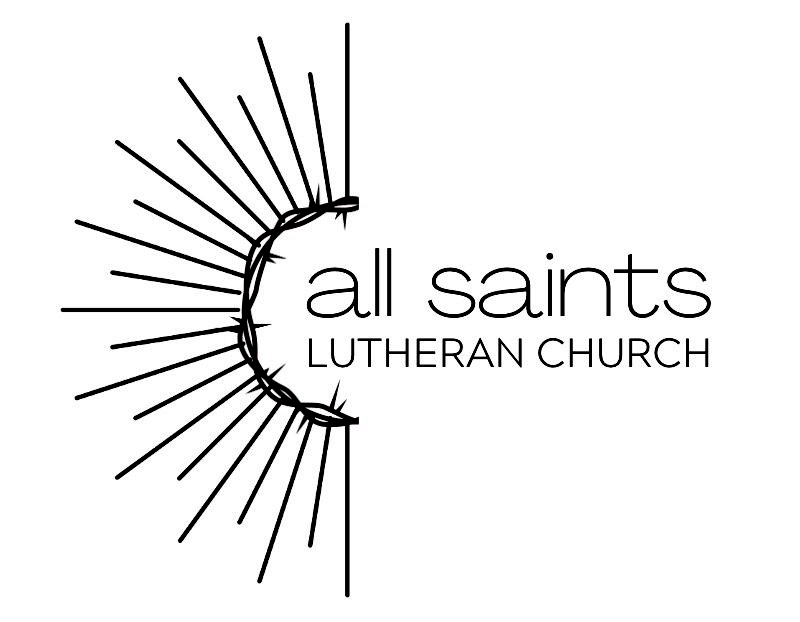Ascension, Year C. Uvalde, et al.
This past Thursday was the day of ascension,
a holy day when Christians around the world
remember and reflect
on Jesus’ ascension into heaven
to be seated at the right hand of God.
And today, as a church, on our day of worship,
we too remember and reflect on Jesus’ ascension
through Luke’s account of this event.
This day is important.
In fact,
this holy day is right up there
with Christmas and Easter.
This is a day when, as Jesus promises,
we see scripture fulfilled and wisdom given.
In Jesus’ final moments with his disciples
he once again shares the gospel:
Christ has died. Christ is risen. Christ will come again.
What this means is
that beginning with God’s covenant to Israel,
extending to the disciples,
and to all generations to come,
God’s forgiveness and salvation reigns!
And not only has God kept these promises,
but God makes new promises
promises of grace and forgiveness
and the gift of the Holy Spirit.
Ascension truly is one of the most holy days
in the church’s life,
full of promise and hope.
But then, Jesus leaves.
He leads them out to Bethany,
the same place where he once raised Lazarus
and then ascends into heaven.
All this seems glorious
and mysterious,
and I find myself mystified and perplexed.
You mean to tell me
that God’s ultimate work is finally accomplished
in and through Jesus Christ’s
suffering, death, and resurrection
and that because of Christ we too
have been justified, saved,
and have the promise of resurrection
and then he just…
leaves?
Is this the feast of the ascension
or the feast of the abandonment?
Surely those standing around Bethany that day
must have felt the words of the psalmist,
the words of Jesus from the Cross,
“My God, my God,
why have you forsaken me?”
And if we’re honest,
maybe we’ve felt that too.
Maybe you’ve looked up to heaven
and felt the vastness of space,
the breadth to time,
and the depths of the world’s pain
and wondered if Jesus leaving this whole Church thing
in the hands of his followers
was such a good idea.
Maybe you’ve felt that black hole of grief
collapsing in on itself
and swallowing worlds and starlight
with a never-ending appetite,
trying to fill the void created by your loss.
Maybe you’ve felt the brokenness of divorce,
the fear of your diagnosis,
the shame and aching need of your addiction,
the disgusted resignation
of being unable to change your circumstances,
the injustices of the world,
or the person you see in the mirror.
Or maybe you’ve just read or watched the news.
Maybe you feared for the safety of our black neighbors,
our Asian neighbors,
or your children,
grandchildren,
your classroom.
And maybe you’ve wondered
if Jesus didn’t so much ascend
as escape,
blow dodge,
go AWOL,
or give up on the whole salvation project.
I think to some degree
our sense of abandonment
comes from the language we use
to describe what happened in the ascension.
We say Jesus “ascended,”
was caught up to heaven.
We say Jesus is seated at the right hand of God.
We paint Jesus
in baroque opulence,
borne on the wings of cheribim
and standing on sunbeams
rising from the earth
departing our realm
for a distant,
invisible,
intangible Heaven
beyond our mortal reach.
And this language,
in words and pictures,
teaches us to think of the ascension
as a separation,
a departure,
a loss of proximity
to our God.
It makes us think of the incarnation
in the abstract,
like an anomaly in the life of God.
It makes us think of the incarnation
and the story of salvation
as an impossible thing
we are expected to believe
as a litmus test for our faith
rather than the living reality
of the whole life of God.
Theologian Wellford Hobbie writes,
“The ultimate question
is not whether
there is someone
or something
out there in limitless space
whom we call God,
but whether there is someone
who knows something
of the dust of the earth,
something of the blood-stained face
human existence wears
and can feel for it.”
When Jesus meets these disciples
in this locked room
he comes in the flesh,
scarred from the ordeal of the cross.
He comes physically,
inviting their embrace.
He comes hungry,
sharing their food.
And he comes reminding them
of all the promises God had made,
and all the promises God had kept.
He comes defining the cross
and proving in is very body
God’s power to redeem.
He comes proclaiming
“you are witnesses of these things,”
and promising power and authority
to testify to what they have seen and heard.
Then Jesus leads them from Jerusalem
to Bethany.
Jesus leads them from the sight of his resurrection
to the sight of Lazarus’ resurrection,
as if to remind them
that they too will die.
and they too will be raised.
Here indeed
is a God
who knows something of the dust of the earth,
who knows something of the blood-stained face
human existence wears
and can weap for it.
Can cry its name
into the stench of the tomb
and rescue it from death.
Here indeed
is a God who’s own face was stained with blood,
who’s own body is but the dust of earth.
Here indeed
is a God who not only feels for human existence
but feels with human existence.
As Jesus is speaking his final blessing
Luke says, “he withdrew from them
and was carried up to heaven.”
But this is not the end of the incarnation.
This is not the end of God with us.
This is not the end of grief or pain,
suffering or death.
This is the incarnation exposed,
the incarnation universalized
before our very eyes.
In Jesus
we have found the hidden God.
And in the ascension,
we have found God hidden in our very lives.
Christ is incarnate in us.
We have not been abandoned by the ascension;
we have been appointed,
appropriated,
called up and sent out.
We are the living, breathing,
bleeding and dying body of Christ.
If Christ is the image of the invisible God,
then the Church is the image of the invisible Christ.
When the world wants to know
that there is someone
who knows something
of the dust of the earth,
something of the blood-stained face
human existence wears
and can feel for it,
the world is looking to the Church.
When the church prays for an end to gun violence
and does nothing,
our neighbors do not see God answer prayers.
When the church takes a moment of silence
in response to the grotesque horror
of racism
and murdered children,
the world hears the silence of God.
When the church remains silent,
the world experiences the absence of God.
The ascension of Jesus
is not God’s abandonment of the world,
but the church’s silence,
inaction,
and insistence on its own rights
is God’s absence,
failure,
and indifference
in the experience of our neighbors.
Beloved,
the incarnation continues in us.
The Gospel is embodied in us.
In us Christ is dying,
In us Christ is rising,
and in us Christ has come again.
Christ has descended into our personal hells
to lead us out of all that holds us captive.
Christ calls our names into the tomb
to free us from all that binds us.
Christ is the Word
spoken into the formless void of grief
and shame
and fear
and doubt,
Let there be life,
let there be love,
let there be peace,
let there be faith.
Thoughts and prayers
without words and actions
are just smoke and mirrors,
to misdirect the world
with a “good news”
that is little more than a slight of hand.
The world wants to know
that there is a God out there
who knows something
of the bullet-racked faces of school children,
and worshipers,
and elderly shoppers,
and can offer more than lip-service to it.
Martin Luther said,
“God doesn’t need our good works,
but our neighbor does.”
Perhaps in our context,
we might hear his words this way,
“God doesn’t need our voices,
our advocacy,
our votes,
but our neighbors do.”
The incarnation of God in Christ
is the revelation of God’s solidarity with the human condition.
The ascension is God’s commissioning of the Church
to practice the same radical solidarity
with a world in need.
We have been called to embody the good news
of God’s solidarity with the human condition.
People of God,
do not stand here “looking up toward heaven.”
Turn your eyes
and hearts,
and voices
toward your neighbor
that they may know
what is the hope to which Christ has called us,
what are the riches of his glorious inheritance among the saints, and what is the immeasurable greatness of his power
that they might see Christ in the Church,
which is his body.
And when we live out this faith,
we are embodying the resurrection,
proclaiming the Lord’s death
until he comes.
Amen.









